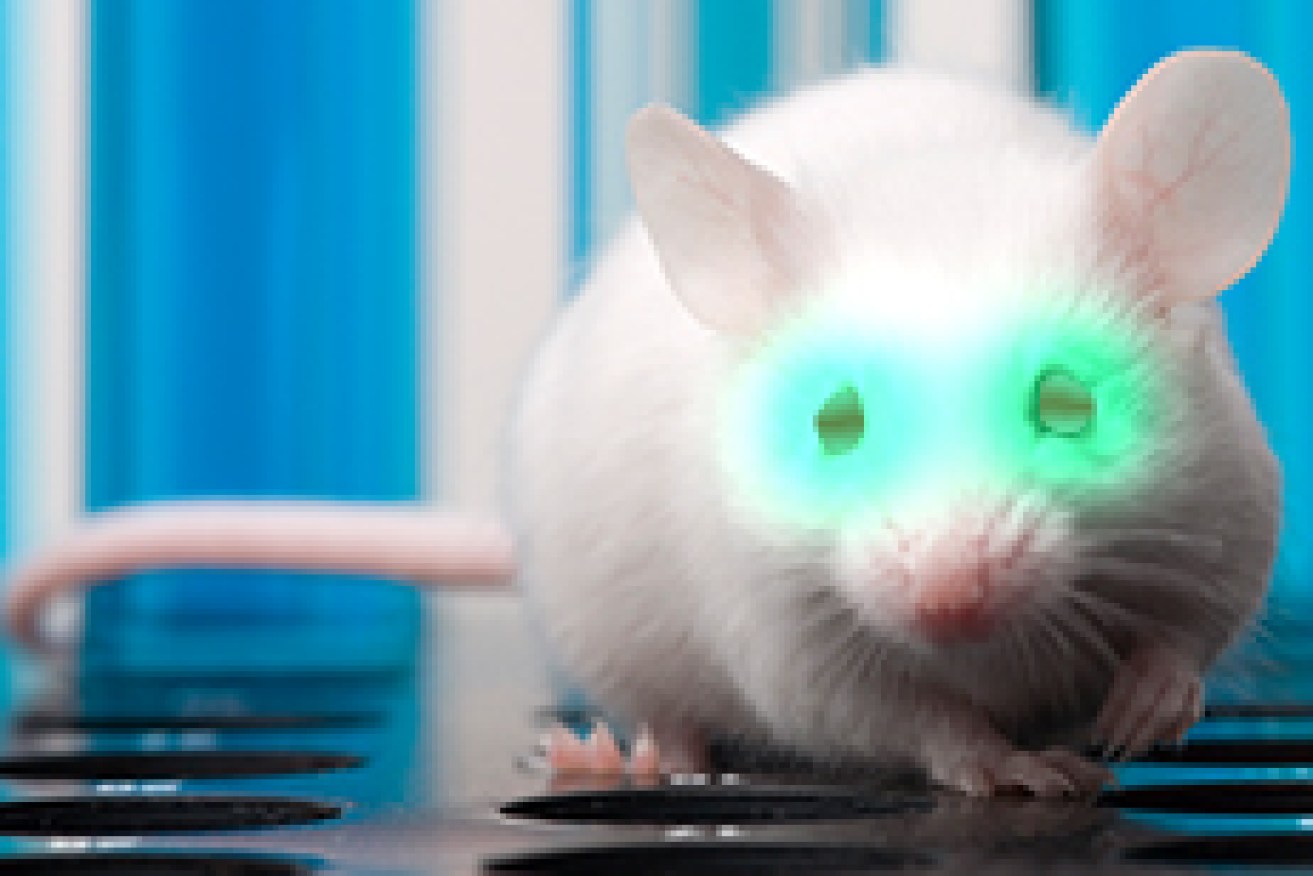New mice superpower could lead to human night vision


A new study which lets mice see in the dark could work in humans too, researchers say. Photo: Getty
An injection that gives mice the superpower of seeing in the dark could also work in humans, researchers in China say.
A team of scientists has been injecting needles into the eyeballs of mice to alter the way they see and process light.
It is no doubt a delicate operation, and the thought of it is enough to make the stomach churn, but the team at the University of Science and Technology of China at Hefei believes its study – published in the science journal Nature – is worth it because it could lead to huge advances for human sight.
They found mice could see in the dark for up to 10 weeks without serious side effects following a single injection of nanoparticles that alter infrared light.
The nanoparticles stick to the eye’s retinal cells, which convert light into electric signals.
These tiny particles turn infrared light, which mice cannot see, into green light, which they can see.
Researchers said the mice that had undergone the treatment could even see infrared light during the day and with enough clarity to distinguish between different shapes.

A science experiment in China helps mice see light that would normally be invisible.
How does it work?
Humans and other mammals, such as mice, can only see a limited range of wavelengths of light.
Infrared radiation has a longer wavelength than what humans are able to perceive.
It is a type of radiant energy that humans can feel as heat, but is invisible to our eyes.
It is all around us; people, animals and objects emit infrared light as they give off heat.
For example, a boiling kettle will emit infrared light that we cannot see.
The nanoparticles injected into the mice’s eyeballs grip tightly to their eyes’ photoreceptor cells and act as tiny light transducers, converting light into an electric signal.
When infrared light hits the retina – the innermost, light-sensitive layer of eye tissue – the nanoparticles capture the longer infrared wavelengths and emit shorter wavelengths within the visible light range.
The nearby photoreceptor cell then absorbs the shorter wavelength and sends a normal signal to the brain, as if visible light had hit the retina.
Professor Jin Bao, one of the scientists leading the experiment, said the infrared light appeared green to the mice who received the injections.
To test whether the mice could make sense of the infrared light, researchers arranged a series of maze tasks to see if the mice could detect it in varying conditions.
Mice that received the injections also displayed physical signs that they were detecting infrared light, such as constricting pupils.
What does it mean for humans?
Chinese researchers believe the test will also work on humans and give us the same ability to see in the dark.
For example, they said it could potentially fix red colour blindness or be used in military operations.
However, they also said more work needed to be done to finetune the emission spectrum of the nanoparticles to suit human eyes, which use more cones than rods for their central vision compared to mouse eyes.
“This is an exciting subject because the technology we made possible here could eventually enable human beings to see beyond our natural capabilities,” Professor Tian Xue said.








